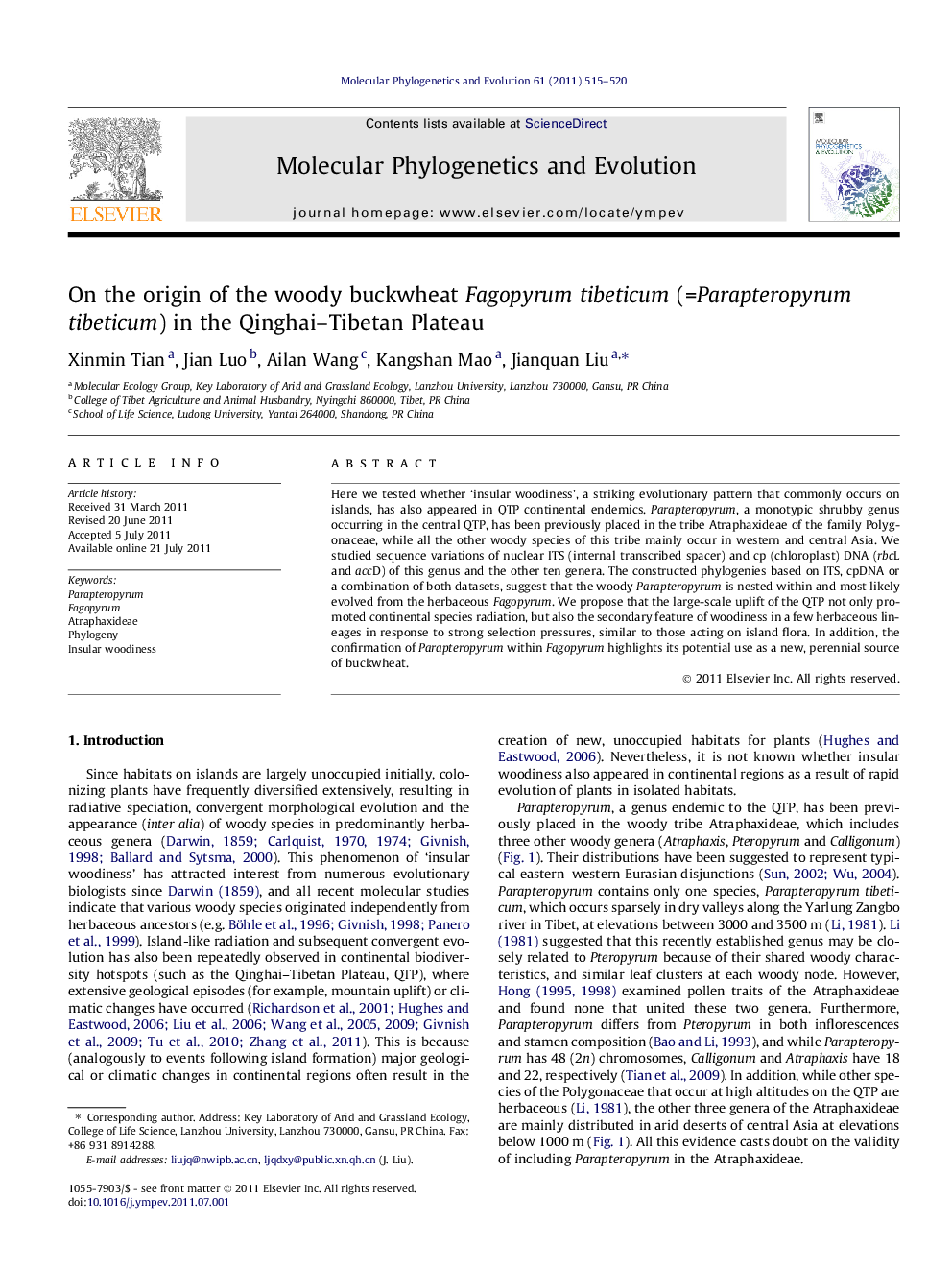| Article ID | Journal | Published Year | Pages | File Type |
|---|---|---|---|---|
| 2834033 | Molecular Phylogenetics and Evolution | 2011 | 6 Pages |
Here we tested whether ‘insular woodiness’, a striking evolutionary pattern that commonly occurs on islands, has also appeared in QTP continental endemics. Parapteropyrum, a monotypic shrubby genus occurring in the central QTP, has been previously placed in the tribe Atraphaxideae of the family Polygonaceae, while all the other woody species of this tribe mainly occur in western and central Asia. We studied sequence variations of nuclear ITS (internal transcribed spacer) and cp (chloroplast) DNA (rbcL and accD) of this genus and the other ten genera. The constructed phylogenies based on ITS, cpDNA or a combination of both datasets, suggest that the woody Parapteropyrum is nested within and most likely evolved from the herbaceous Fagopyrum. We propose that the large-scale uplift of the QTP not only promoted continental species radiation, but also the secondary feature of woodiness in a few herbaceous lineages in response to strong selection pressures, similar to those acting on island flora. In addition, the confirmation of Parapteropyrum within Fagopyrum highlights its potential use as a new, perennial source of buckwheat.
Graphical abstractFigure optionsDownload full-size imageDownload as PowerPoint slideHighlights► Systematic position of the woody Parapteropyrum was examined by different DNA datasets. ► This monotypic genus is deeply nested within the herbal Fagopyrum. ► The study provides an example of ‘insular woodiness’ in continental endemics. ► This woody species may have potential use as a new and important buckwheat resource.
